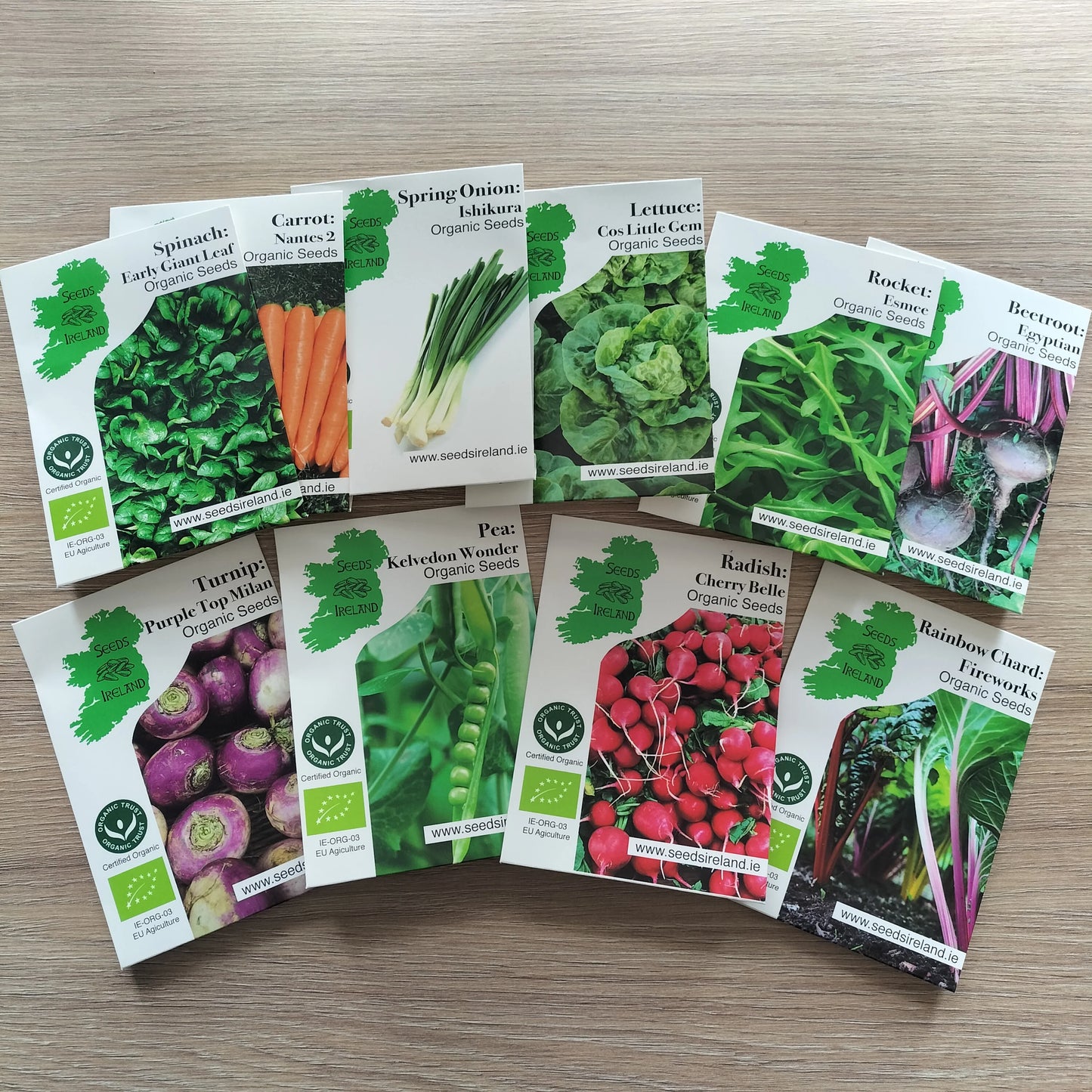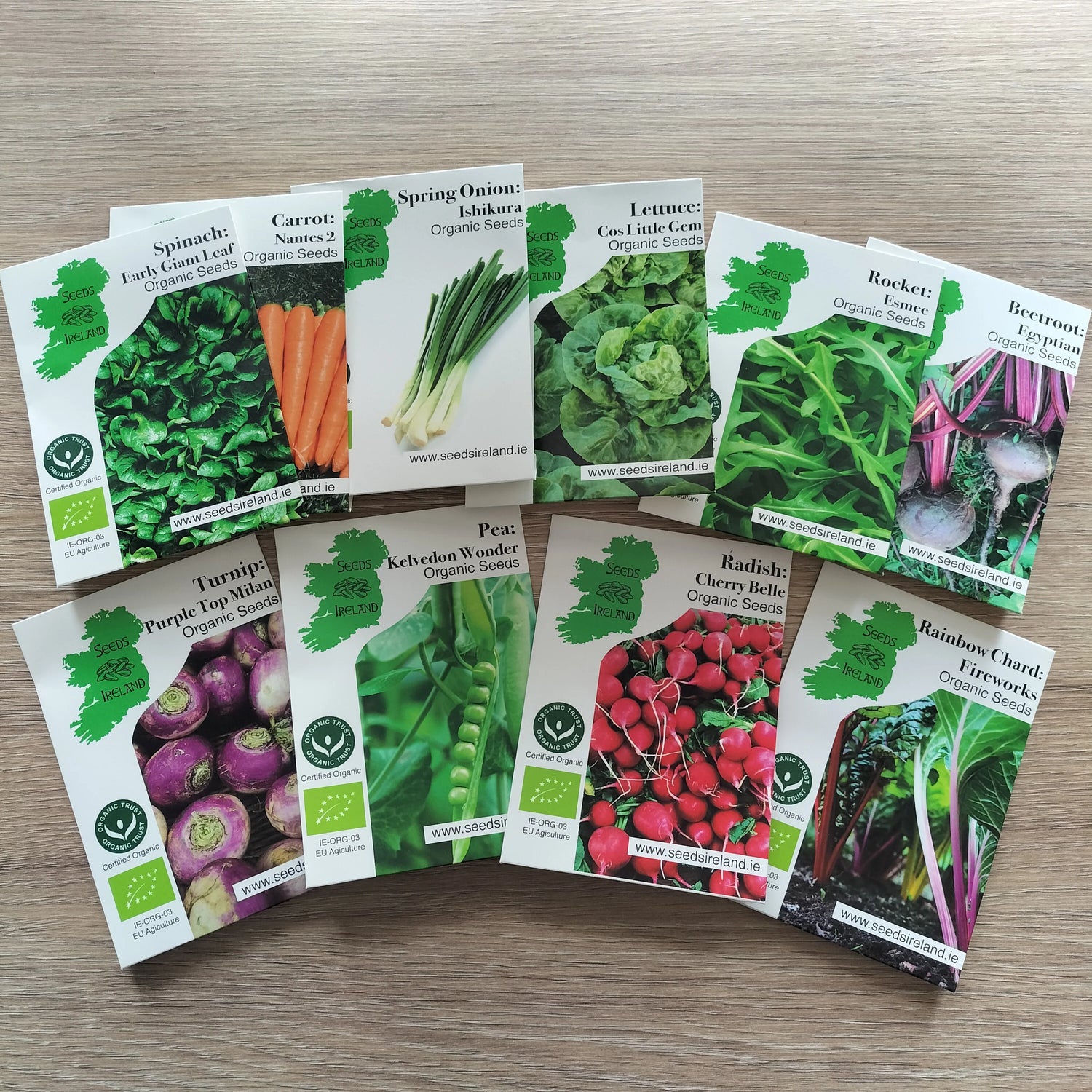Seeds Ireland
Easy To Grow Vegetable Seed Assortment
- Regular price
- €26,95 EUR
- Regular price
-
- Sale price
- €26,95 EUR
- Unit price
- per
Couldn't load pickup availability
This is an assortment of 10 packs of easy to grow vegetable seeds. They require little effort to grow and maintain compared to other types of vegetables
There is 1 pack of each of the following varieties included in this assortment.
- Spinach: Early Giant Leaf Organic Seed (Approx 500 Seeds)
- Beetroot: Egyptian Organic Seed (Approx 150 Seeds)
- Carrot: Nantes 2 Organic Seed (Approx 800 Seeds)
- Pea: Kelvedon Wonder Organic Seeds (Approx 100 Seeds)
- Radish: Cherry Belle (Approx
- Turnip: Purple Top Milan Organic Seed (Approx 300 Seeds)
- Spring Onion: White Lisbon Organic Seed (Approx 275 Seeds)
- Lettuce: Cut and Come Again Catalogna Organic Seed (Approx 250 Seeds)
- Rocket: Esmee Organic Seed (Approx 1200 Seeds)
- Rainbow Chard: Fireworks Organic Seed (Approx 80 Seeds)
These seeds are classed as easy to grow as they can all be direct sown outdoors From end March/April onwards.
What Is Direct Sowing & Why Do It?
If you’re not familiar with the term “direct sowing” this is when you plant your seeds directly into the area where they are intended to grow, either completely outside or under the protection of a polytunnel.
This method does not require you to use seedling modules or small pots to get seeds started, so there is no transplanting of seedlings, which makes the process of growing quicker and easier.
It also requires no investment in seed starting equipment like pots, modules or heat mats etc.
Generally the vegetables you can direct sow are easier to grow. Things like tomatoes, peppers, cucumbers etc. that are generally started earlier in modules and pots indoors are trickier to get the seeds germinated, and to grow, especially if you are a beginner.
If you direct sow outside, you won’t have to water unless we get a prolonged dry period. Overall, it requires less time and effort.
Sowing Method
We use the same sowing method for all of these. Just make a little drill in the soil with your hand and sprinkle the seeds thinly into the drill, or if you want to take a bit more time and be more precise, you can take a little pinch of seeds and place them in the drill at the recommended spacing. Out of all of the above, peas are the only ones we take a little extra time to space out.
Then cover the seeds lightly with soil. Follow the instructions on the packs for planting depth, but you really don’t have to be that precise.
Thinning
If you’re not familiar with the term “thinning”, to describe it, if there were a bunch of young seedlings growing together in a bunch, and you removed some of the seedlings to leave fewer, that is thinning them.
So when the seedlings start to grow in the drills, you can thin out the seedlings to leave fewer plants, and give those fewer plants room to grow larger.
A great thing about all of the above varieties is that all their leaves are edible, so never waste the thinnings! They are great to eat in a salad, on sandwiches or to garnish your dinner.
Sometimes thinning isn’t even necessary. For example, if you sow Spring Onion and Carrot seeds thinly enough, you won’t have to thin them, they will grow in a bunch.
Growing
The good thing about direct sowing is that there is not that much work to do after sowing. If we get a prolonged dry spell, you’ll have to water your vegetables. You’ll also have to keep the area around them weeded, to keep weeds from taking nutrients from the soil that could be otherwise taken by your vegetables.
Peas need to be supported by stakes, a trellis, or similar.
If pests are present in the area, you might need to protect you vegetables with netting, or something similar.
Share


